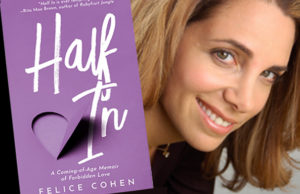Sapphic, Age-Gap Romance Books: One of the Most Forbidden Love Tropes. But Why?
I’m a sucker for a juicy, sapphic, age-gap romance book. You know the ones. Two women with at least a ten-year age difference—the older, usually confident, smart and independent, perhaps a professor or a boss, and the younger, maybe her student or employee, who is less experienced, but full of curiosity—and a growing attraction between them. As tension builds, society forces the couple apart, but sure enough they resolve the drama and get a happy ever after.
If you crave these stories too, you’re not alone. Sapphic, age-gap romance books are one of the most popular of all the forbidden love tropes. And for good reason: they make for titillating stories. Maybe the reader’s fantasy is of an older heroine offering a protectiveness coupled with a tenderness that one might not receive from someone their own age. (Finding Jessica Lambert by Clare Ashton). Or it’s the enticement in seeing an older woman having a second chance at feeling desired. [Light, Coming Back by Ann Wadsworth]. Or perhaps it’s just the fulfillment of a past longing of falling for a friend’s mother. (Mistakes Were Made by Meryl Wilsner).
“When it’s done well, age-gap books can be an interesting driver of conflict,” says Tara Scott, podcast host with Queerly Recommended. “Both within the relationship, having to work through their own internal issues, or outside it, from family and friends.” And conflict, we know, is essential in romance. But why is the sapphic, age-gap romance forbidden at all? Why is our sense of morality triggered when two women of varying ages fall in love? Why do we immediately think, “The younger person’s in it for the money” or “the older one is taking advantage of her.” Is it so preposterous that there needs to be an ulterior motive? This view that women in different life stages cannot love each other feels ageist.
If I sound defensive, dear reader, it’s because this subject is personal. At 23 I had an affair with my boss, Sarah, a 57-year-old woman. This was the early 90s. Before “love is love” it was “Don’t ask, Don’t tell,” a motto we took to heart. The only book reflecting anything close to our situation was The Price of Salt by Patricia Highsmith, the first of its kind to give two women a somewhat happy ending. “Somewhat” because for them to be together the older woman had to give up custody of her young daughter. (At least no one died or went back to men, a marked improvement in sapphic books.)
However, the age difference in The Price of Salt was a fraction of our 34 years. Not seeing our story reflected in the media instilled in me that what we were doing was wrong and made me feel ashamed, a weight I carried for three decades. In my quest to get over Sarah, I wrote the age-gap book I wish I’d had back then. Half In: A Coming-of-Age Memoir of Forbidden Love details our love story and reads like a novel.
I am the first to admit that an age-gap relationship can have its challenges, but it can also have its positives. Sarah offered me life advice, and I supplied her with a fresh, if not humorous, perspective. It also made us more tolerant of each other’s generation. (We used to play Frank Sinatra and Guns and Roses on shuffle.) Studies have also found that people in age-gap relationships live longer, report greater commitment and trust and lower jealousy than similar-age couples, and their relationship satisfaction is higher. But I bet that depends on them ignoring naysayers.
Our issues had nothing to do with love, only what others would think of our love, which created internal scrutiny: Sarah thought the situation wasn’t fair to me, and I thought there was something wrong with me. We talked often about breaking up, which broke our hearts, so we stayed together, albeit in secret. And while a secret can bring two people closer and increase desire, it’s not sustainable. Not in the long run.
Today, there appear to be more lesbian age-gap couples, but I don’t think that’s the case. I think they’ve always been prevalent, just remained in the shadows because we have considered them forbidden. Is it our evolvement as a culture that allows today’s age-gap couples to feel safer about being out? Or could it be that seeing Sarah Paulson and Holland Taylor (32-year age gap) in public help them feel less alone and less ashamed? Hard to tell. All I know is that had I had them as role models back then, it might not have taken me thirty years to tell my story.



